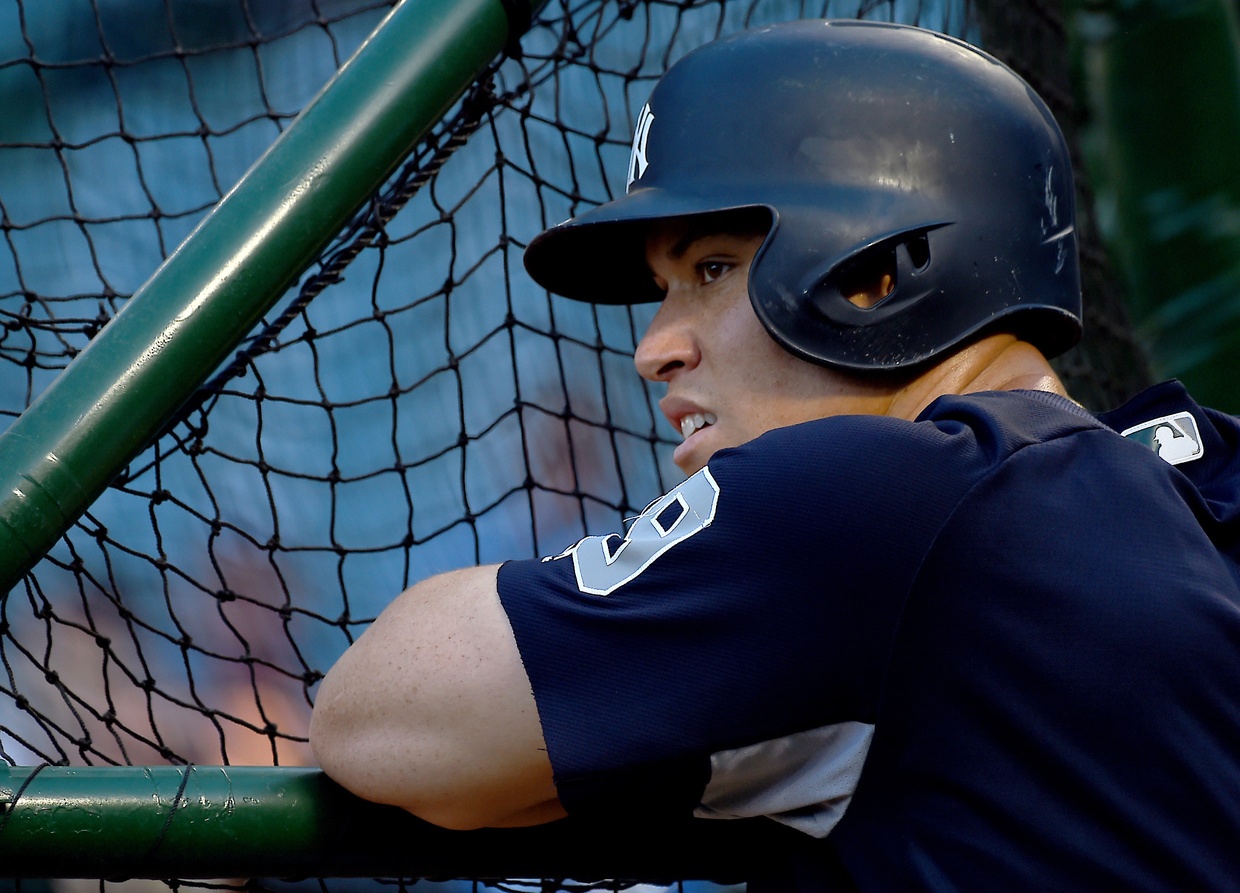I hate to be the bearer of bad news, but the Yankees’ offense has been pretty lucky so far this season. Some amount of regression is coming, but that’s alright. If the results had been just mediocre and lucky, that might be an issue, but the Yankees’ offense has been really, really good so far.
In terms of raw runs scored, New York is second in the AL behind just the Astros. In both on-base and slugging percentage, the Yankees are also second in the league, trailing again only the Astros. In other words, there is room for the Yankees to take a step back and still be quite proficient.
That’s fortunate, because as a team, the Yankees are sporting the highest BABIP in the league. Their mark of .313 is .005 higher than the next-closest AL team and .013 higher than the rough average of .300. That may not seem like a huge margin, but when you consider that it applies to every batted ball by every player on the Yankees, every game, it adds up. A higher BABIP becomes more sustainable when you hit the ball hard, on a line, and/or on the ground. They have certainly been hitting the ball pretty hard, with Aaron Judge ranking second in the majors in average exit velocity behind only Miguel Sano, while Gary Sanchez and Matt Holliday also rank in the upper portion of the MLB. However, the Yankees’ overall batted ball distribution as a team doesn’t indicate a team that should be experiencing such a good fortune on their hits.
They rank 19th in the majors in line drive rate, while they rank 18th among MLB teams in groundball percentage. Now, there’s nothing wrong with this approach, as it’s quite balanced. Besides, when playing in a home ballpark like Yankee Stadium, it makes sense to get the ball in the air. More flyballs mean more dingers. But it also means that the Yankees’ BABIP shouldn’t be anywhere near its current mark. On an individual level, most of the good fortune is coming to the hitters that take up the most amount of team plate appearances. Of the seven hitters that have produced the most offensive value this season, six of them have a BABIP of at least .321.
| Player | 2017 PA | 2017 BABIP | 2016 BABIP |
|---|---|---|---|
| Aaron Judge | 219 | 0.408 | 0.282 |
| Aaron Hicks | 170 | 0.346 | 0.248 |
| Brett Gardner | 221 | 0.294 | 0.310 |
| Matt Holliday | 205 | 0.330 | 0.253 |
| Starlin Castro | 233 | 0.355 | 0.305 |
| Jacoby Ellsbury | 153 | 0.321 | 0.295 |
| Didi Gregorius | 139 | 0.330 | 0.290 |
| Gary Sanchez | 123 | 0.301 | 0.317 |
| Chase Headley | 203 | 0.300 | 0.303 |
I know Judge has been hitting the ball hard, but .408?!? That seems, to sum it up in one word…unsustainable. Hicks, Holliday, Castro, Ellsbury, and Gregorius all appear to be experiencing good fortune as well, while no one has suffered from exceptionally poor luck.
A lot of that batted ball regression should come in the form of home runs, unfortunately. A home run may not count as a batted ball in the BABIP formula, but a warning track flyball does, and almost every flyball turns into an out, especially at the major league level. The Yankees currently sport a team HR/FB rate of 16.3 percent, which is good for second in the league and third in the majors (behind the Brewers and the Rays). Because of the ballpark, the Yankees will probably naturally have an edge in this department, but even then, their marks the last three seasons have been 12.4, 12.8, and 9.6 percent.
Between the points that the Yankees’ hitters have
A) probably been outperforming their skill, and
B) definitely been outperforming their expected luck,
I’d wager that a wave of regression is coming in the remaining two-thirds of the season. But that doesn’t mean the same thing as pushing the panic button. An offensive regression can be offset by new, better personnel, for example. It isn’t a given that Gleyber Torres will be an upgrade over Chase Headley, but wow has Headley been bad this season. The offense will also be offset by the Yankees’ pitching, which has prevented the third-fewest runs in the league. Besides, the Yankees probably won’t have the second-best run differential in the AL going forward, but that’s fine; banked wins are still wins. Even if New York just splits its remaining 108 games, it still ends up with 86 wins, a total often good enough for at least a wild card spot. In fact, PECOTA’s projected rest-of-season standings on the Baseball Prospectus main page would have the Yankees with the home field advantage in the wild card game.
The Yankees have already outperformed our expectations in 2017, and the season isn’t over. Enjoy it as it goes.
Note: Numbers through the week of June 5.
